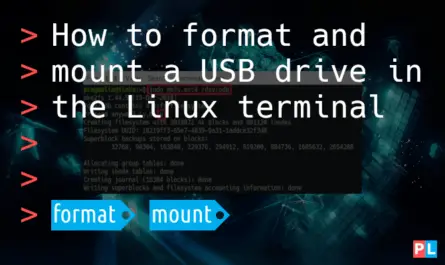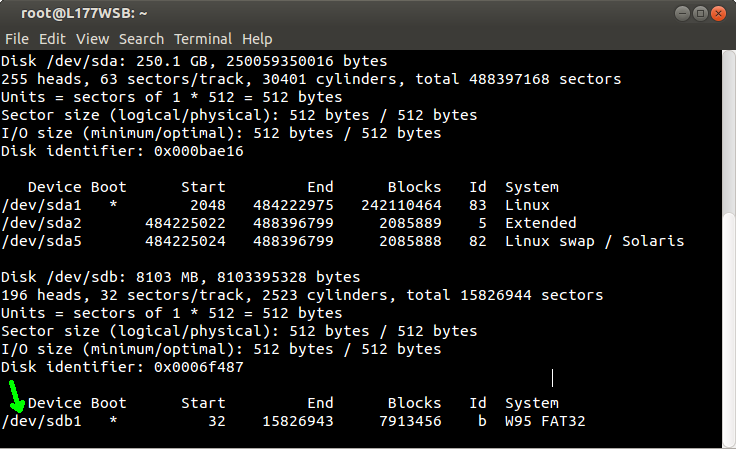

- #How to reformat a usb drive on linux serial#
- #How to reformat a usb drive on linux software#
- #How to reformat a usb drive on linux Pc#
- #How to reformat a usb drive on linux windows#
Maybe it'll be fixed in a newer version.Īnyway - different vendors have different tools, it's a rabbit hole, there's no standard here AFAIK, and (at least this tool) will only work on Windows unfortunately.įrom what I can tell, this will test the memory chip and write a bad sector map to the controller chip so it can present only good memory to the OS. Set your preferences in English, then restart the program and don't change the language - it should work. However - it will crash if you switch the program to English language!
#How to reformat a usb drive on linux software#
The FC MP Tools program will identify this as a 1178BC chipset:Īnd the software I linked works with it under Windows XP and 10. Note the chipset part number on the microcontroller: FC1178 BC1 Again - each vendor has his own software that talk to the controller chips via USB. It runs in Wine, but will not detect the drive chipsets (it probably needs direct access to the USB controller to do it's thing).Īlso - for this to work you need to have a flash drive with a specific Alcor chipset that is supported. As far as I can tell, these are designed by Alcor Micro, and manufactured by FirstChip (FC).Īpparently "MP" stands for "Mass Production".
#How to reformat a usb drive on linux serial#
There are manufacturer tools that perform low-level formatting and can write some settings (like LED behaviour, making the drive read-only) and data (like manufacturer name, model name, serial number) to the memory controller chipset, but these tools usually are made only for Windows, and are often in Chinese.

Unfrotunately I couldn't find any programs that can do that on Linux. To do that - you need to talk directly to the memory controller chip.

There is such a thing as a low-level format for Flash memory, but it's done in factories with vendor-specific software. The make and model printed on the outside of the case is not likely to help you find who made the controller inside of it. You would begin by opening the flash drive, looking for the smaller of (likely) two chips that are on the small PCB, and doing some Googling. Depending on the make and model of the controller chip, you may be able to find a recovery or configuration utility (likely Windows only) that could reset this controller chip. Some of these controller chips can be configured to report part of the flash as a separate CD-ROM partition, or act like two separate USB storage devices. There is a controller chip in all flash drives that accepts USB commands from the host and talks to the raw flash inside on the host's behalf. You do NOT want to repeat this step as the act of writing to a bad block could prevent you from setting that particular bit again that identifies it as bad.īut you are not dealing with raw flash. Each "eraseblock" has an additional small "OOB" block that holds error correcting information - and this is where it is marked as bad. Raw flash needs a different initial preparatory step at the factory - each flash "eraseblock" (analogus to a "block" on disks) needs to be tested and marked as bad if it is indeed bad. Various other meanings include writing zeros to all blocks, configuring the drive to disable "hidden" areas such as HPA and DCO and then zeroing all blocks, or other things more related to partitioning than formatting. Modern IDE and SATA hard drives are low-level formatted too, but only at the factory.
#How to reformat a usb drive on linux Pc#
Early MFM and RLL PC hard drives could be low-level formatted, often using a utility built into the hard drive controller's (an ISA card) ROM. Low-level formatting a floppy prepares the disk to be able to read and write blocks. In this way the head can detect when it is A) on a track and B) where it is on the track.

The original meaning was a step needed in the formatting of disks - disk drives need header, sync and other patterns written on the media before it can store data to it. Low-level formatting means many different things to different people and on different contexts.


 0 kommentar(er)
0 kommentar(er)
